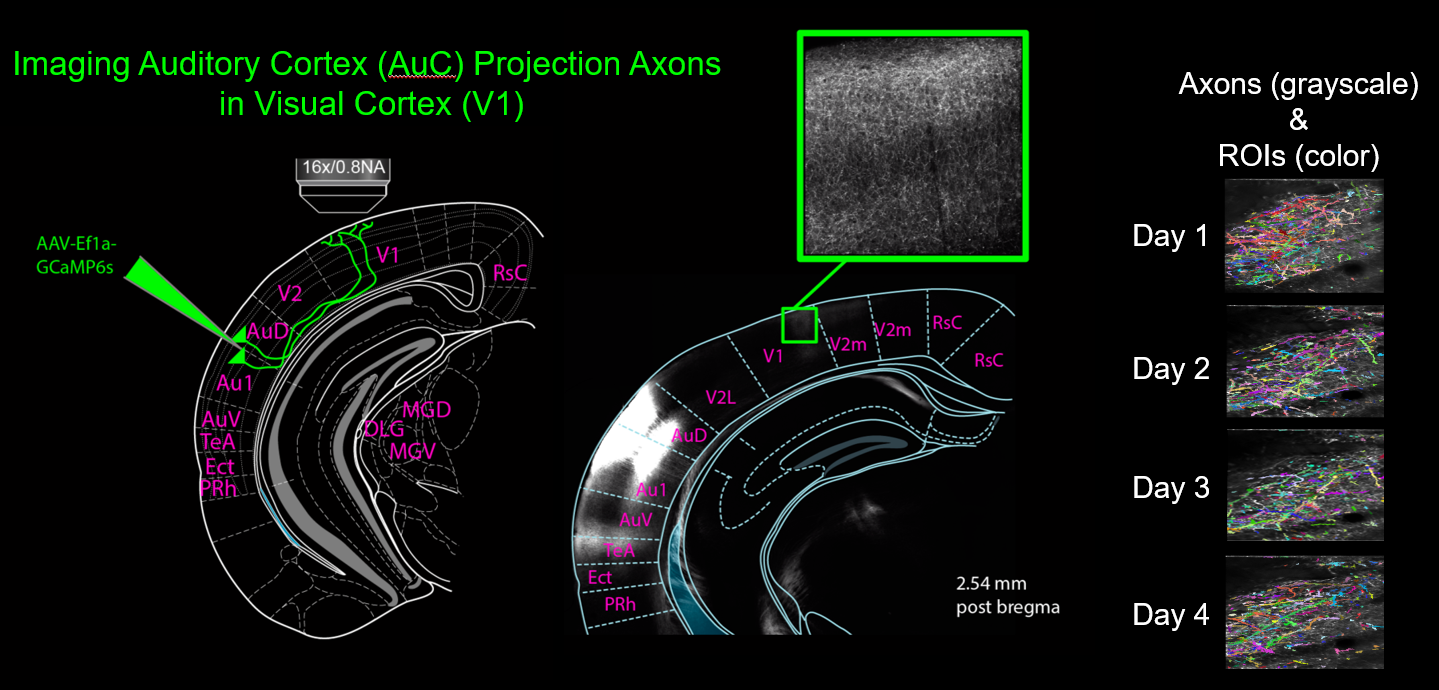Team work makes sensory streams work:
Our senses work together, learn from each other, and stand in for one another, the result of which is perception and understanding.
We want to understand what one part of the brain is saying to another part. For example, auditory cortex projects directly into visual cortex. What messages are being sent via this conduit? We use 2-photon imaging to monitor the activity of projection neurons in their target sites in mice while the animals learn relationships between auditory and visual stimuli and play multisensory video games.
(Left) Using genetics and calcium indicators, we can visualize the neural activity of specific populations of projection axons. Au1 (primary auditory cortex), AuD (dorsal region of auditory cortex), V1 (primary visual cortex).
We want to know how well one part of the brain listens to another part. We want to know how one brain region interprets the messages being sent to it by another region. We use 2-photon imaging to monitor the activity of neurons in one region (such as visual cortex) while optically manipulating the input (for example, from auditory cortex) in mice while the animals are learning about multisensory environments.
(Left) Using genetically encoded opsins we can manipulate the activity of projection axons while simultaneously imaging the neural activity of their target sites expressing genetically encoded Ca++ indicators.
How we do it:
We use 2-photon imaging to record the activity of neurons while mice learn relationships between auditory and visual stimuli and play video games.
In depth investigations into multisensory interactions in the brain are imperative not only for expanding our understanding of the neural underpinnings of real-world perception during behavior and learning but also for providing fundamental insight into the neural basis of multisensory disorders such as dyslexia, SDD (sensory discrimination disorder), and SMD (sensory modulation disorder). Importantly, these investigations will reveal neural pathways capable of plasticity and thus malleable for therapeutic interventions for such disorders.
Projects in the lab focus on normal brain function as well as addressing how multisensory processing is disrupted after trauma, in altered states such as mania and depression, and in brain disorders such as SDD, SMD, bipolar disorder, schizophrenia, and autism. The lab investigates neural mechanisms that underlie when and why therapeutic practices, such as listening to music and seeing nature, help regulate and correct multisensory processing disruptions.
"What you see and hear depends on where you are standing. It also depends on what sort of person you are." - C.S. Lewis


